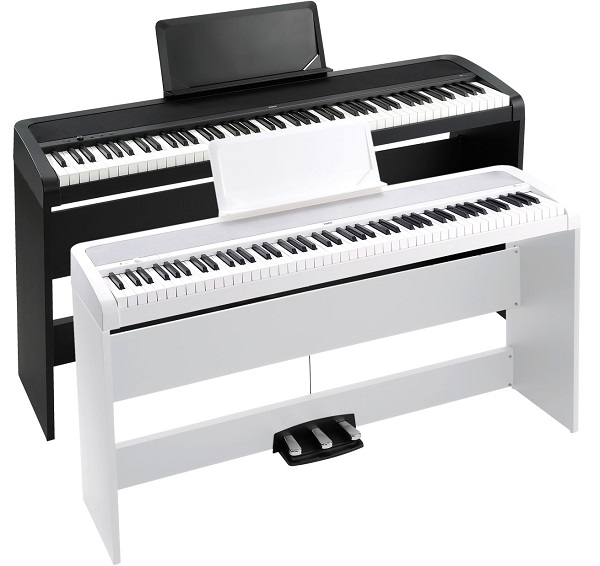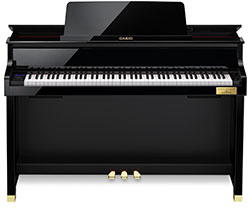Download the latest version of MidiPipe for Mac - Modify MIDI messages in real-time. Read 27 user reviews of MidiPipe on MacUpdate. In the Audio MIDI Setup app on your Mac, choose Window Show MIDI Studio. In the MIDI Studio window, click the Choose MIDI Configuration pop-up menu (it may show Default), then choose the configuration you want to view. In the toolbar, click the following buttons to change how the configuration is shown. The very first and the only working MIDI player for Windows Phone platform is here! Application features perfect software MIDI synthesis (the same or even better than your desktop PC, using Gravis Ultrasound compatible patches), cool themed spectrum analyzer visualization, huge MIDI database access, playlists support and many more.
Audio MIDI Setup User Guide
If you use MIDI devices or a MIDI interface connected to your Mac, you can use Audio MIDI Setup to describe the configuration of your MIDI devices. There’s a default configuration already created, but you can set up your own.
You can use this configuration information for apps that work with MIDI, such as sequencers, to control your MIDI devices.
Note: Make sure your MIDI devices are connected to your Mac. If you’re using an interface device, connect any other MIDI devices you’re using to the interface. Also check that any software provided by the manufacturer of the MIDI devices has been installed. For more information, see the documentation that came with your devices.
View a MIDI configuration

In the Audio MIDI Setup app on your Mac, choose Window > Show MIDI Studio.
In the MIDI Studio window, click the Choose MIDI Configuration pop-up menu (it may show Default), then choose the configuration you want to view.
In the toolbar, click the following buttons to change how the configuration is shown:
Hierarchical View : Devices in the configuration are shown as icons. If a device isn’t connected, its icon is dimmed. To view information about a device, such as channel properties and ports, and to add or remove ports, double-click the device’s icon.
List View : Devices in the configuration are shown in a list, organized by type (such as Interface or External Device). If a device isn’t connected, it’s dimmed. To filter which devices are shown, click the Show pop-up menu, then choose an option (such as Online or Connected). To view information about a device, double-click the device. To view its ports, or to connect or disconnect devices, click the device’s disclosure triangle.
Create a MIDI configuration
In the Audio MIDI Setup app on your Mac, choose Window > Show MIDI Studio.
In the MIDI Studio window, click the Choose MIDI Configuration pop-up menu (it may show Default), then choose New Configuration.
Enter a name for the new configuration, then click OK.
To add a new external MIDI device, click the Add button in the MIDI Studio toolbar.
To set properties and add or remove ports for the MIDI device, double-click the device, or select it, then click the Device Info button in the toolbar.
In the Properties window, do any of the following:
Describe the device: Enter a name for the MIDI device; the name appears in apps you use with the device. If you know the manufacturer and model, you can enter those.
Change the device icon: Click the MIDI device’s icon to open the Icon Browser, select a different icon to represent the device, then click the new icon to close the Icon Browser.
Change the device color: Click the color well, select a different color to use for the MIDI device, then close the Colors window.
Set the device channels and other properties: Click Properties, then click the channels to use for transmitting and receiving audio. To deselect a channel, click it again. Also select whether to use the MIDI Beat Clock, the MIDI Time Code, or both, then select other features.
Add or remove ports: Click Ports, click the Add button below the list of ports, then specify the MIDI In and MIDI Out connectors for the port. To delete a port, select it in the list, then click the Remove button .
Select MIDI-CI profiles for interface devices: If an interface device supports MIDI-CI, click MIDI-CI to see the profiles available on each channel. To turn a profile on or off, select or deselect its checkbox.
Click Apply.
Repeat steps 4 through 7 for each MIDI device you want to include in the configuration.
In the MIDI Studio window, specify the connection between MIDI devices:
In Hierarchical View , drag the In or Out connectors at the top of a device icon to the corresponding connector on another device icon.
In List View , click a device’s disclosure triangle, click the Port disclosure triangle, click the Add Connection icon, then use the pop-up menus to specify the connections.
If you have a MIDI interface connected to the USB port on your Mac, it should appear in the MIDI Studio window. If it doesn’t, see If a connected MIDI device isn’t shown.
You can’t specify a “MIDI thru” connection between two MIDI devices. To indicate a MIDI thru connection, connect the two MIDI devices to the same port of the MIDI interface device.

Midi Casio For Mac Keyboard

Edit a MIDI configuration
Midi Casio For Macbook Air
In the Audio MIDI Setup app on your Mac, choose Window > Show MIDI Studio.
In the MIDI Studio window, click the Choose MIDI Configuration pop-up menu (it may show Default), then choose Edit Configurations.
Select a configuration, then click Duplicate, Rename, or Delete.
When you’re finished making changes, click Done.

Midi Casio For Mac Computers
| Software | Description | OS | License | File Date | Comments | Power |
|---|---|---|---|---|---|---|
| PatternSequencer v0.8 | Simple MIDI pattern sequencer. | Mac | Freeware | 2005-10-03 | 0 | 70db |
| Pro Tools v12.5 | Pro Tools is an advanced audio and music production platform. | Mac | Demo | 2016-04-04 | 0 | 70db |
| One Man Band Essentials v1.0 | Turn any keyboard into an arranger keyboard with real time chord recognition. | Mac | Demo | 2009-05-18 | 0 | 65db |
| Metro 7.2.4 | High-powered sequencer for the design of professional audio projects. [Hosts VST/AU Plugins] | Mac | Demo | 2014-04-15 | 0 | 60db |
| hypercyclic v1.5.554 | The hypercyclic is a MIDI Arpeggiator and Mangler [VST/AU] | Mac | Freeware | 2015-03-08 | 0 | 60db |
| Studio One v3.2.2 | Music creation and production application that makes audio recording, MIDI sequencing, and audio mastering simple right out of the box, yet provides a wealth of professional features. [Hosts VST Plugins] | Mac | Demo | 2016-06-06 | 2 | 60db |
| MidiSwing v0.3.5b | Small Java MIDI sequencer - Read, edit and create midi files. | Mac | Freeware | 2008-11-17 | 0 | 60db |
| seq541 1.0 | SEQ541 is a MIDI pattern sequencer. | Mac | Freeware | 2004-11-09 | 0 | 60db |
| Liquid Rhythm 1.4.5.2 | MIDI Sequencer and beat generation software instrument [VST/AU/RTAS/STANDALONE] | Mac | Demo | 2015-07-29 | 0 | 60db |
| Tracktion T7 | Clean, clutter-free audio/MIDI workstation. | Mac | Demo | 2016-03-07 | 0 | 60db |
| Sequera v1.6 | Sequera approaches MIDI sequencing in a unique way. | Mac | Paid | 2013-05-23 | 0 | 60db |
| Liquid Notes | This is a music creation app that simplifies chords, scales, and harmonic movement. | Mac | Demo | 2014-06-09 | 0 | 60db |
| MultitrackStudio 8.3 | MultitrackStudio is an multitrack mixer/recorder that can host VST plugins. [Host] | Mac | Demo | 2016-07-04 | 0 | 60db |
| Sequential v3.0.5 | Multi-effect sequencer for creating rhythmical effect patterns. [AU] | Mac | Demo | 2016-03-04 | 0 | 60db |
| Audio Evolution v5.3.1 | Easy to understand software for recording, editing and mixing audio and MIDI. Ideal for the beginner, but powerful enough for more advanced users. [Hosts AU/VST] | Mac | Demo | 2012-06-05 | 0 | 60db |
| Malodie | A very odd on-line experimental loop-based MIDI sequencer and drum machine. | Mac | Freeware | 2003-10-31 | 0 | 55db |
| RapidComposer v2.82 | Rapidcomposer is a software designed to help songwriters as they write in various music styles | Mac | Demo | 2015-02-02 | 0 | 55db |
| SmartScore Pro v10.5.4 | Fully integrated music scanning, scoring and MIDI sequencing. | Mac | Demo | 2013-05-01 | 1 | 55db |
| NOTION3 2.0 | Bridges the gap between notation and audio applications, allowing you to not only create and listen, but to perform live or produce music with stunning results. | Mac | Demo | 2010-09-03 | 1 | 55db |
| b-step sequencer 2 | This step sequencer is designed to make your melodies very fast. Easy to use and with native Novation Launchpad support. [VST] | Mac | Demo | 2014-10-27 | 0 | 55db |
| EnergyXT 3 Beta2 | Modular MIDI and audio environment. [Hosts VST Plugins]. | Mac | Demo | 2016-04-04 | 0 | 55db |
| Pitchmap 1.6.1 | Pitchmap is a pitch processing plugin. [AU] | Mac | Demo | 2014-06-09 | 0 | 55db |
| Intuem v4.0.5u | Professional music and audio production at its easiest. | Mac | Demo | 2010-01-05 | 0 | 55db |
| Thesys v1.6.5 | MIDI step-sequencer. [VST/AU] | Mac | Demo | 2015-08-06 | 0 | 55db |
| Klee v2.1.0 | MIDI-enabled software recreation of the hardware Klee step sequencer | Mac | Demo | 2011-05-31 | 0 | 55db |
| iPiano v2.1.6 | Versatile music and MIDI tool for Mac OS X | Mac | Shareware | 2003-10-22 | 0 | 55db |
| Numerology v3.1.1 | Numerology sequencer is Modular MIDI sequencer. Hosts AU plugins. | Mac | Demo | 2011-11-10 | 0 | 50db |
| FretPet X v1.3.3 | Guitar-oriented music sequencer and chord reference. | Mac | Shareware | 2012-09-04 | 0 | 50db |
| midiBUG | midiBug is an app that lets you manually bug the midi stream of your Mac to create unique sounds. | Mac | Paid | 2013-02-08 | 0 | 50db |
| ARPG8R 0.9.5 | MIDI Arpeggiator. [VSTi] | Mac | Demo | 2012-07-23 | 0 | 50db |
